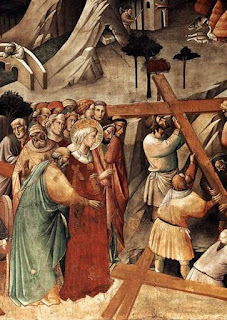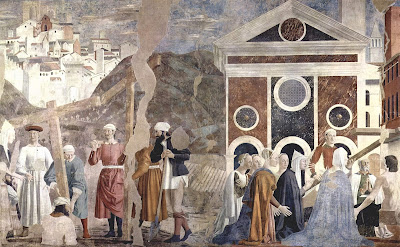The day happened to be the Feast of the Cross, celebrating the finding of the True Cross by Saint Helena. David decided to found an abbey the following year on the spot, which he named Holyrood ("holy + cross"). In its church was a reliquary with a piece of the True Cross that David's mother, Saint Margaret, brought from Waltham Abbey (supposed burial place of Harold). (In 1346 this relic fell into the hands of the English after the Battle of Neville's Cross.)
It was originally occupied by Canons Regular from Merton Priory. (At about this time, Thomas Becket [born c.1120] was starting as a student at Merton.) The place became an important location for councils. The papal legates to Scotland would have councils there. When David's grandson, William the Lion, was captured at the Battle of Alnwick (not the same one where David's father was killed), the nobles met at Holyrood to discuss his ransom. Scotland's parliament met there several times between 1256 and 1410. Robert the Bruce also held a parliament there.
After the mid-1400s, the kings of Scotland began using it as a residence while at Edinburgh. In the second half of the 1500s, parts of it were in such a state of disrepair that they need to be closed down, demolished, and completely rebuilt. Evidence of the ruins shows that the original structure was not built to the same standards as the rest of Europe. The aisle vaults had thin flagstones and the vertical pieces were constructed with, let's say, less attention to straight lines than we would like to see in a building that had tons of stone suspended over your head. In 1686, James VII established a Jesuit College there. A year later the abbey was converted to a Roman Catholic Chapel. Its use became increasingly religious again, taking interest in it out of public interest. Without royal attention, the fabric began to decay more. The roof collapsed in 1768 and was never replaced. Proposals to rebuild and restore have never come to fruition, but the ruins (see illustration) continue to be a tourist destination.
Tomorrow, let's jump ahead in time to the Battle of Neville's Cross, part of the Second Scottish War of Independence, that lost the piece of the True Cross.




